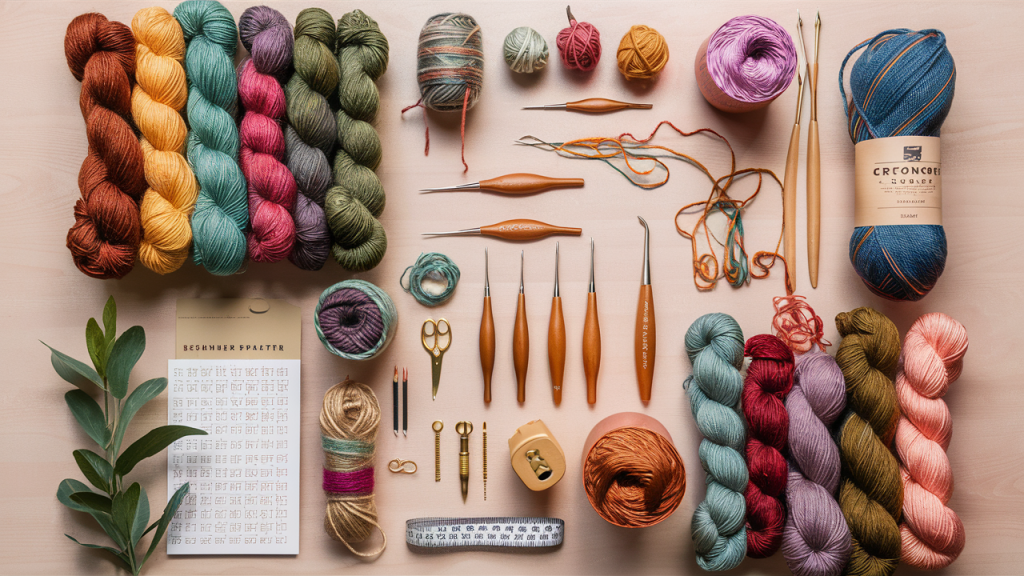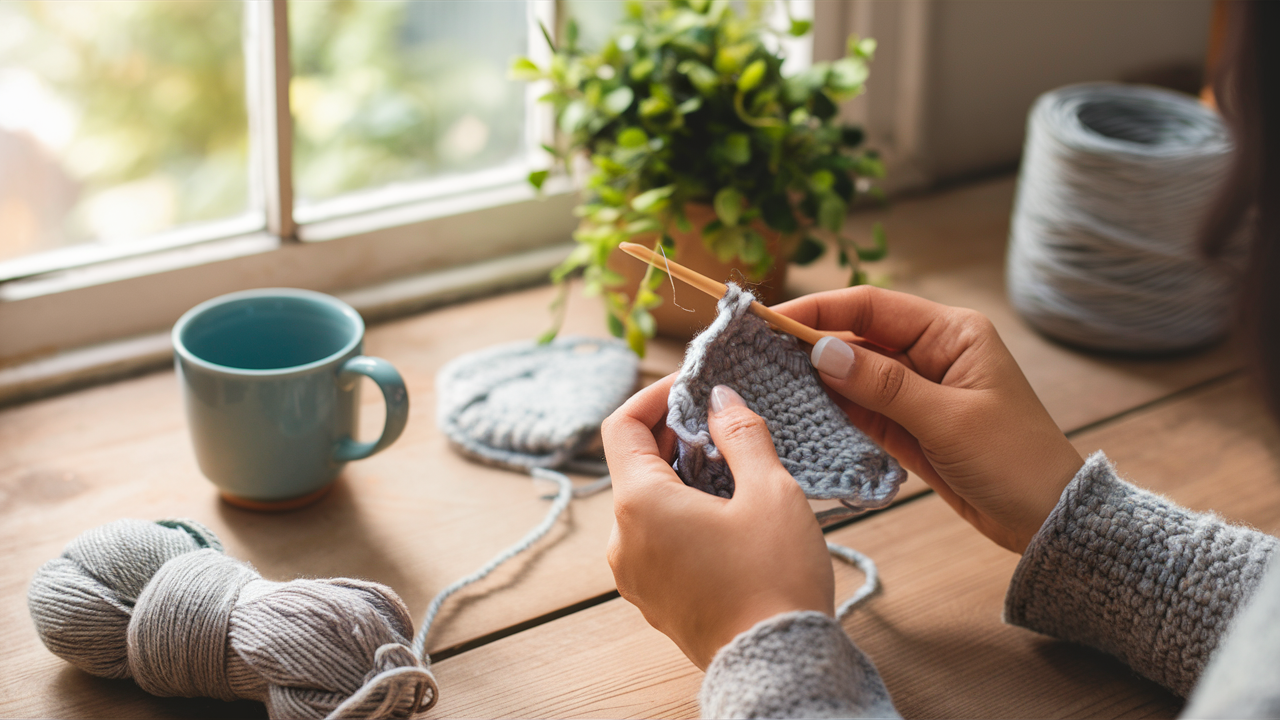I still remember how lost I felt when I first tried to learn to crochet. I didn’t know what I needed or where to begin. If you’re feeling the same, don’t worry. I’m here to help.
Crocheting is a fun and relaxing hobby, but starting can feel a bit confusing. You don’t need a lot to get going—just a few basic tools and the right kind of yarn. Once you have those, you can start making simple things like scarves, dishcloths, or even small toys.
In this blog, I’ll walk you through the must-have crochet supplies for beginners. I’ll keep it easy and clear, so you don’t get overwhelmed. By the end, you’ll know exactly what to pick up and how to get started. Let’s make your first crochet project simple and fun.
Why I Love Crochet?
Crochet has become one of my favorite things to do. It’s more than just making things with yarn. It helps me feel calm and focused. After a long or stressful day, picking up my hook and yarn feels like a mental break. It’s quiet, peaceful, and something I can enjoy at my own pace.
One of the best aspects of crochet is that I can see my progress immediately. Even if I only have a few minutes, I can make a few stitches and feel like I’ve done something. The feeling of watching yarn turn into something useful or beautiful, such as a scarf, coaster, or small flower, is incredibly satisfying. It gives me a sense of pride.
I also love how crochet lets me be creative. I can play with colors, shapes, and patterns. I can make things for myself or give them as handmade gifts. It’s a craft that’s easy to start but always has more to learn. That’s why I keep coming back to it again and again.
The Most Basic Crochet Supplies
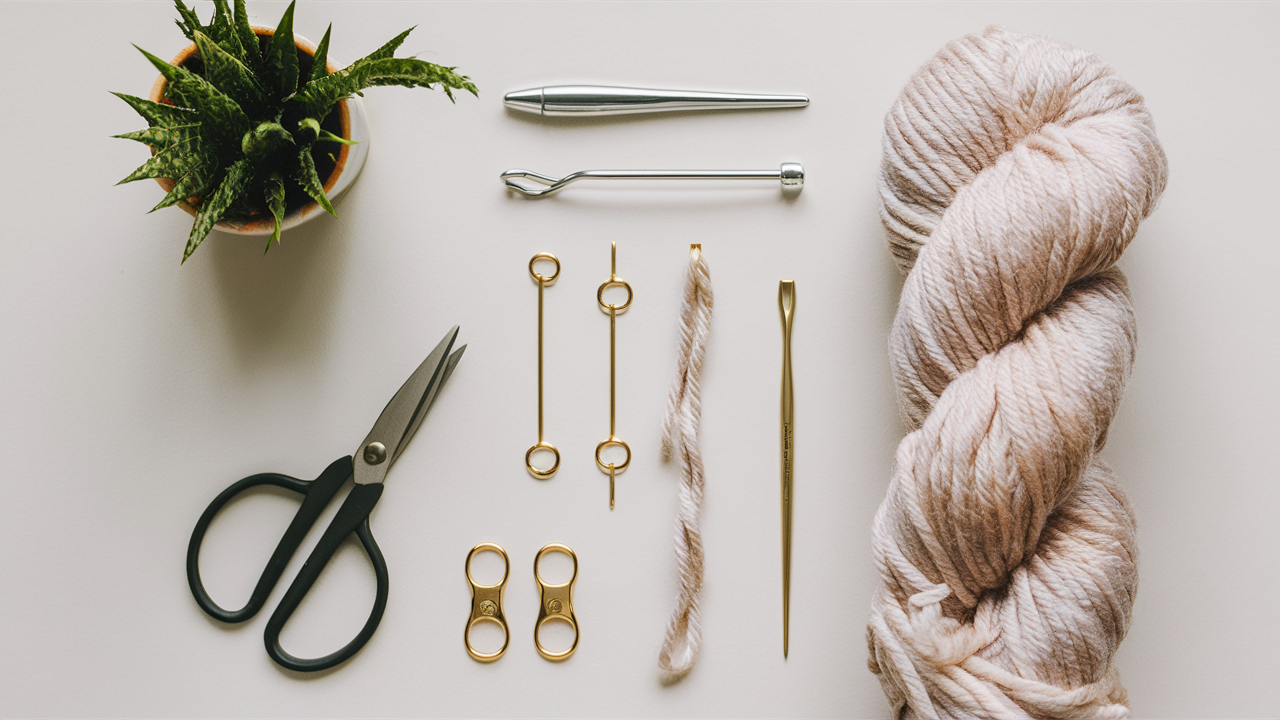
Let’s start with the main tools. You only need a few items to begin.
1. Crochet Hooks
Crochet hooks come in different sizes and materials, like metal, plastic, or bamboo. As a beginner, I suggest using a medium-sized hook. A size H-8 (5mm) is a good starting point.
Tips:
- Look for a hook with a soft grip if your hands get tired easily.
- Don’t start with very small or large hooks—they can be hard to control.
- You only need one to start, but buying a small set can help later.
2. Yarn
There are so many types of yarn! But for beginners, I recommend a medium-weight yarn. This is often called “worsted weight yarn.” It’s labeled as weight 4.
Choose yarn that is:
- Soft and smooth (avoid fuzzy or textured yarn for now)
- Light-colored (so you can see your stitches)
- Acrylic or cotton (easy to handle and not too pricey)
What to avoid: Don’t use very thin yarn (like lace) or very thick yarn (like jumbo). They’re hard to work with when you’re learning.
3. Scissors
You don’t need fancy scissors; just a small, sharp pair that cuts yarn cleanly.
Tips:
- Keep them close by while working.
- Choose a pair with a protective cover if you plan to carry them around.
4. Yarn Needle (Tapestry Needle)
You’ll need this to weave in the ends of your yarn when you finish a project. A yarn needle has a big eye (the hole) to fit yarn through and a blunt tip.
5. Stitch Markers
These help you keep track of where you are in a pattern. You can buy plastic stitch markers or use things like paper clips or safety pins.
Helpful Extras That Make Crocheting Easier
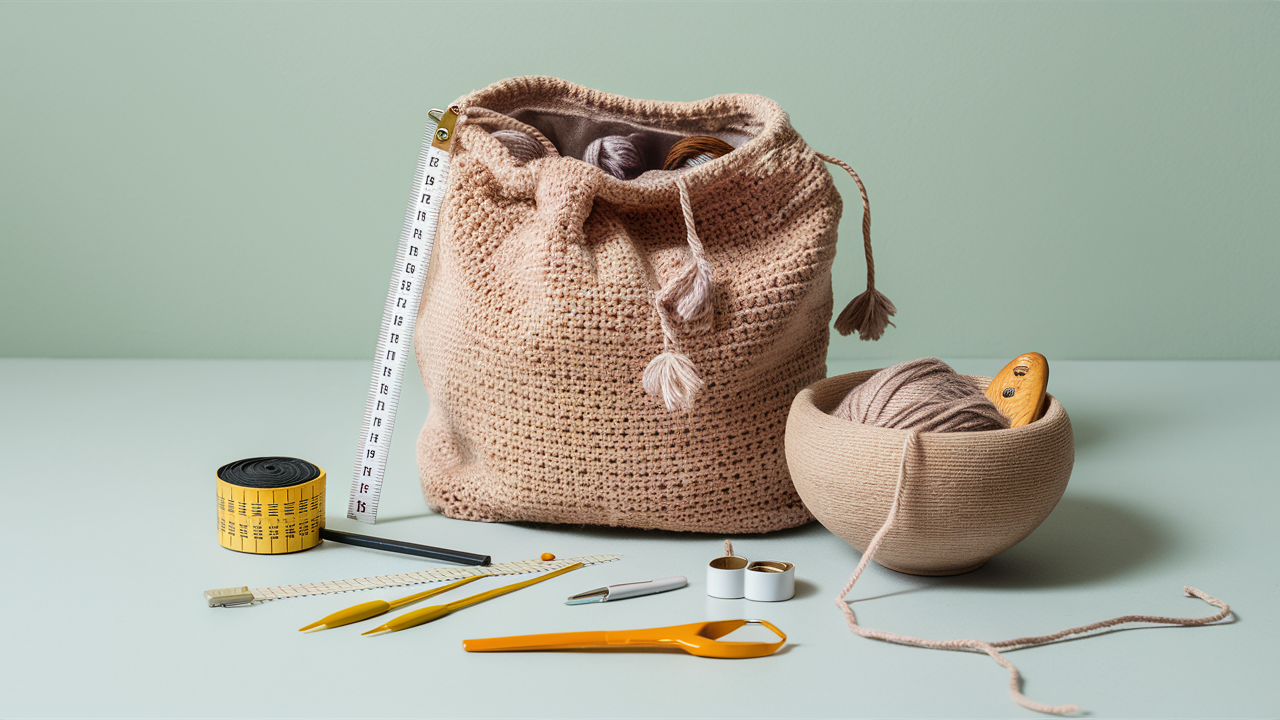
These tools aren’t must-haves, but they make things smoother.
- Measuring Tape: A soft measuring tape helps you check the size of your project. It’s very useful when you’re making things like hats or clothing.
- Row Counter: This little tool helps you keep track of how many rows you’ve done. You can also use a pen and paper, or a free app on your phone.
- Project Bag or Storage Box: Keeping all your tools and yarn in one place saves time and effort. A small tote bag, box, or even a zip pouch works well.
- Yarn Bowl: This is a bowl designed to hold your yarn ball while you crochet. It keeps it from rolling around or tangling. You don’t need one to start, but it’s nice to have later.
Picking the Right Yarn and Hook Combo

When you’re just getting started with crochet, using the right yarn and hook together makes a big difference. If the hook is too small for your yarn, your stitches will be tight and hard to work with. If the hook is too large, your project may appear loose and messy. That’s why matching your yarn and hook size is important.
Most yarns have labels that tell you the recommended hook size. For beginners, the best combination is medium-weight yarn (also known as worsted weight or weight 4) with a size H-8 (5mm) crochet hook. This pair is great because the yarn is thick enough to hold, and the stitches are easy to see.
A quick guide to help:
| Yarn Weight | Common Name | Suggested Hook Size |
|---|---|---|
| 1 | Super Fine | 2.25–3.5 mm (B–E) |
| 2 | Fine | 3.5–4.5 mm (E–7) |
| 3 | Light / DK | 4.5–5.5 mm (7–I) |
| 4 | Medium / Worsted | 5–6.5 mm (H–K) |
| 5 | Bulky | 6.5–9 mm (K–M) |
| 6 | Super Bulky | 9 mm and up |
If you’re not sure, start with worsted-weight yarn and a size H (5mm) hook. It’s a safe, beginner-friendly combo that works well for most practice projects.
Extra Tips:
-
If your stitches are too tight, try using a hook size that is one size larger.
-
If your stitches are too loose, try using a smaller hook size.
-
Try a few rows and see how it feels in your hands. You’ll get a sense of what works best for you.
Don’t stress too much about getting it perfect. It’s okay to test and change your hook size until the yarn feels easy to work with. The more you practice, the more natural it will feel.
Basic Crochet Terms You Should Know
You might come across some new words. These are a few crochet terms and what they mean:
- Chain (ch): The starting stitch in most patterns.
- Single crochet (sc): A short, tight stitch.
- Double crochet (dc): A taller, looser stitch.
- Slip stitch (sl st): Used to join or move yarn without adding height.
- Yarn over (yo): Wrapping the yarn around your hook.
- Stitch (st): One loop or part of your project.
These are often used in patterns, so it helps to know them.
Choosing Your First Crochet Pattern
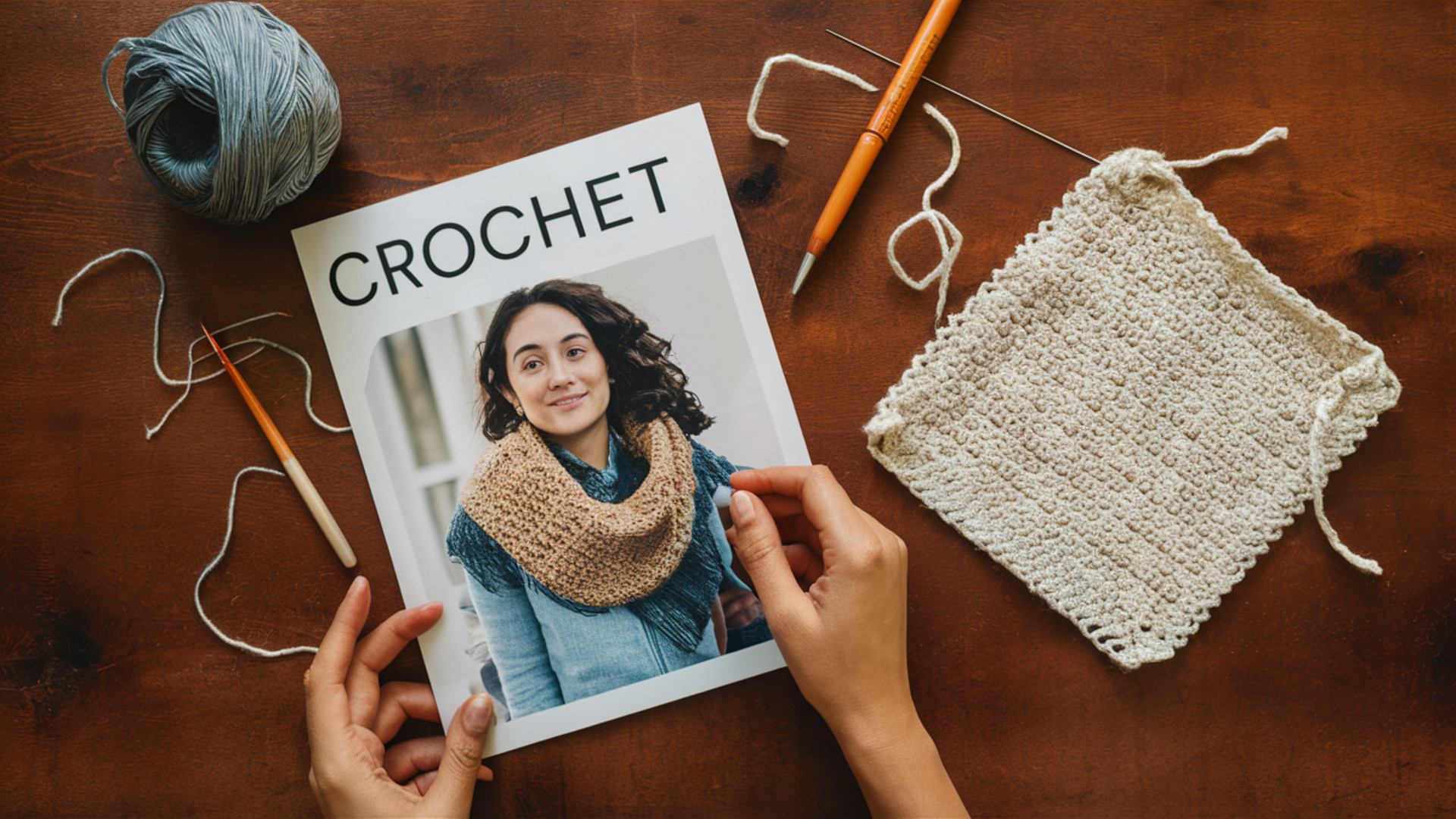
After you have your yarn and hook ready, the next step is picking your first crochet pattern. This is the fun part! However, it can also be a bit confusing at first because there are numerous options. That’s why it’s a good idea to start small and keep it simple.
Your first project should be easy to follow and not take too long to finish. This helps you build confidence. When you finish something early, it makes you feel proud and keeps you motivated to try more.
What Makes a Good Beginner Pattern?
What to look for when picking your first pattern:
- Simple stitches like chain, single crochet, or double crochet
- Flat shapes such as squares or rectangles
- No shaping or complex instructions
- Step-by-step pictures or videos help
- Short length, so it won’t take days to finish
If a pattern includes too many new stitches or is full of abbreviations you don’t understand, it’s best to save it for later.
Great First Projects to Try
A few easy projects that are perfect for beginners are:
- Dishcloth or washcloth: Just a small square using basic stitches
- Simple scarf: A longer rectangle that gives you lots of practice
- Granny square: A classic starter project with a repeated pattern
- Headband or ear warmer: Quick to make and useful to wear
- Bookmark: Flat, fast, and makes a fun gift
- Basic pouch: Two rectangles stitched together with space for small items
Once you finish one of these, you’ll feel ready to try more patterns and explore different shapes and stitches.
Where to Find Easy Patterns
You don’t need to buy a pattern book to get started. Numerous free, beginner-friendly patterns are available online.
- YouTube: Great for seeing each step in action
- Pinterest: Type in “easy crochet patterns” and scroll through ideas
- Crochet blogs: Many crafters post free patterns with tips and photos
- Craft store websites: Places like Yarnspirations or Lion Brand have free patterns sorted by skill level
Tip: Repetitively working on the same small project is perfectly fine. In fact, it’s a great way to get better. Every time you redo the same pattern, you’ll see how much easier it feels and how much neater your stitches look.
Easy Yarn Brands for Beginners
When you’re just starting out, you don’t need fancy or expensive yarn. What you really need is yarn that’s easy to work with, doesn’t split, and holds its shape well. These yarn brands are ideal for beginners because they’re soft, easy to handle, and readily available online or in local stores.
1. Red Heart Super Saver
Red Heart Super Saver is one of the most popular yarns for beginners. It’s affordable, strong, and comes in many colors. It holds up well and doesn’t fray easily, which makes it great for practice.
-
Fiber: 100% acrylic
-
Weight: Medium (4)
-
Good for: Scarves, blankets, dishcloths
2. Caron Simply Soft
As the name says, this yarn is really soft. It’s easy to glide through your fingers and doesn’t split much. It has a light shine and works great for scarves, hats, or baby blankets.
-
Fiber: 100% acrylic
-
Weight: Medium (4)
-
Good for: Wearables, baby items, gifts
3. Lion Brand Basic Stitch
This yarn is made for beginners. It’s soft, smooth, and machine washable. It’s also less likely to pill (form fuzz balls), so your projects will look neat longer.
-
Fiber: 100% acrylic
-
Weight: Medium (4)
-
Good for: Clothing, home items, accessories
4. Bernat Super Value
This yarn is thick, soft, and durable. It’s a good choice if you want to tackle large projects, such as blankets or pillows. It retains its shape well and is available in both solid and variegated colors.
-
Fiber: 100% acrylic
-
Weight: Medium (4)
-
Good for: Afghans, throws, home decor
5. Premier Just Yarn
If you’re shopping on a budget, this yarn is a great option. You can find it at Dollar Tree stores and on their website. It’s simple, soft, and perfect for practice.
-
Fiber: 100% acrylic
-
Weight: Medium (4)
-
Good for: Learning stitches, beginner projects
Tips for Picking Beginner Yarn
- Stick to solid, light colors so you can easily see your stitches.
- Avoid fuzzy or very thin yarns at first; they can be hard to work with.
- Start with acrylic or cotton for easy care and smooth stitching.
- Buy just one or two skeins to begin. That’s enough for small projects.
Conclusion
Starting to crochet can feel a little confusing, but it becomes easier with the right tools and a little guidance. You don’t need to spend a lot of money or buy everything at once. A simple hook, some soft yarn, and a pair of scissors are all you need to get started. Once you get the hang of it, you can add more tools as you go.
Take your time. Go slow. Don’t worry if your stitches don’t look perfect at first. That’s normal. Every project helps you learn something new. Mistakes will happen, but they’re part of the process. Just keep practicing, and you’ll improve with each attempt.
Crochet is not just a hobby; it’s something you can enjoy for years. You can make gifts, decorate your home, or even start a small business someday. Most of all, it’s fun and relaxing. So pick up that hook and yarn, and give it a try today. You’ve got this.
Ready to Learn More? Now that you know what you need to start crocheting, take the next step and learn about thread sizes! Check out my guide on crochet thread sizes to help you choose the right thread for your next project.


